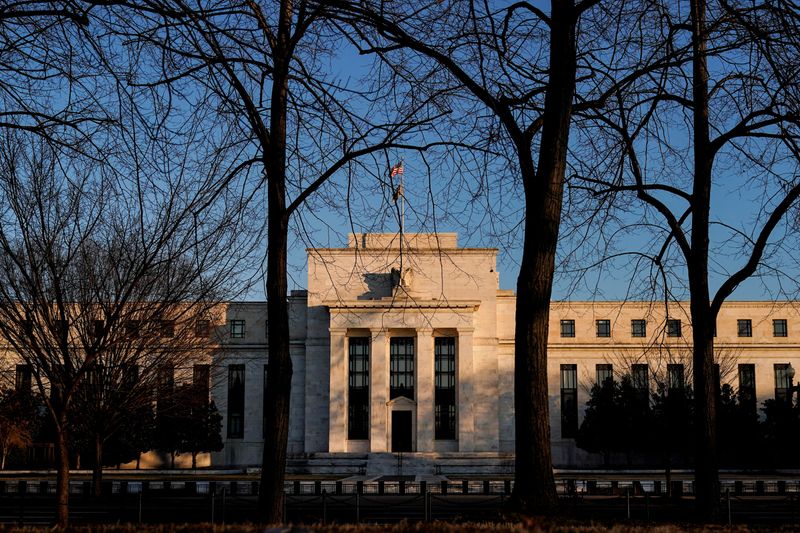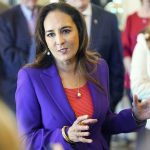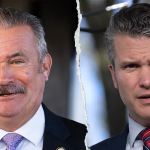
By Ann Saphir
(Reuters) – The Federal Reserve has plenty of reasons to deliver a widely expected interest rate cut on Thursday, including a decline in inflation and a cooling in labor markets that makes it harder for Americans to find jobs.
Continued weak demand for loans and strict lending standards may provide another, though less obvious, reason. Stringent credit conditions discourage businesses from borrowing, and therefore from hiring, potentially slowing job growth further.
When Fed officials gather on Wednesday on the heels of the U.S. presidential election they will be presented with the latest data on what banks are saying about credit demand and what share of them are still tightening loan terms.
It’s unlikely that information on its own will drive the Fed’s rate decision as credit conditions do take a back seat to other factors. Those include policymakers’ increasing confidence that inflation, at 2.1% year-over-year in September by the Fed’s targeted measure, will continue to fall even if rates aren’t kept quite so high, and the risk that, under the weight of high borrowing costs, job growth could slow further and push up the unemployment rate, now at 4.1%.
“I don’t think banking conditions are the game changer here,” said BMO economist Scott Anderson. Still, he said, they will be a “another piece of the puzzle” as policymakers try to suss out what will happen with demand as they continue to cut rates.
And on the margin, credit conditions argue for lowering the policy rate further; after all, Anderson says, “it’s still a pretty tight credit environment.”
Economists and Fed policymakers generally believe that the Fed’s policy rate, now in the 4.75%-5.00% range, remains restrictive, weighing on economic growth and banks’ willingness to lend.
According to a paper published early this year by the San Francisco Fed, stricter bank lending standards in the wake of last year’s regional banking failures as well as the Fed’s tight monetary policy could add as much as half of a percentage point to the unemployment rate by the end of 2024.
That’s true even though the pace at which banks are tightening loan terms has slowed and is expected to continue to do so, the researchers found.
The Fed’s last survey of senior loan officers, published in August, showed banks have continued to tighten lending standards though less aggressively than before.
Meanwhile demand for some types of loans, if not strengthening, is beginning to stabilize.
A survey of banking conditions in Texas by the Dallas Fed last month shows lending standards continued to tighten even after the Fed cut rates in September, though less sharply than before.
The same survey also showed loan demand continues to weaken, but banks expect that further Fed interest rate cuts will revive business borrowing in coming months – exactly what central bankers are aiming for as they seek to keep monetary policy tight enough to keep downward pressure on inflation but not so tight it chokes off growth.
HIGHER LONG-TERM RATES
Fed policymakers meeting this week will also have eyes on the recent sharp rise in longer-term borrowing costs, which may add to caution on reducing rates.
The benchmark U.S. 10-year Treasury yield is trading around 4.30%, up more than a half of a percentage point since the Fed cut rates by that amount on Sept. 18. The rise reflects the generally stronger economic data since central bankers last met, despite a sharp drop in job growth in October due in part to the now-resolved Boeing (NYSE:BA) strike.
The rise in long-term yields also stemmed from concern about higher deficits and inflation under a potential second Donald Trump presidency.
If yields were to stay elevated, the Fed may not lower rates as fast or as far as previously thought.
A slower pace of rate cuts is in line with what some Fed policymakers already may have thought appropriate, says Oxford Economics’ Bob Schwartz.
“However, I also believe that the sentiment to normalize policy as quickly as possible is even stronger amongst Fed officials, as real rates remain historically restrictive, and the economy is on a slowing trajectory,” Schwartz said.






